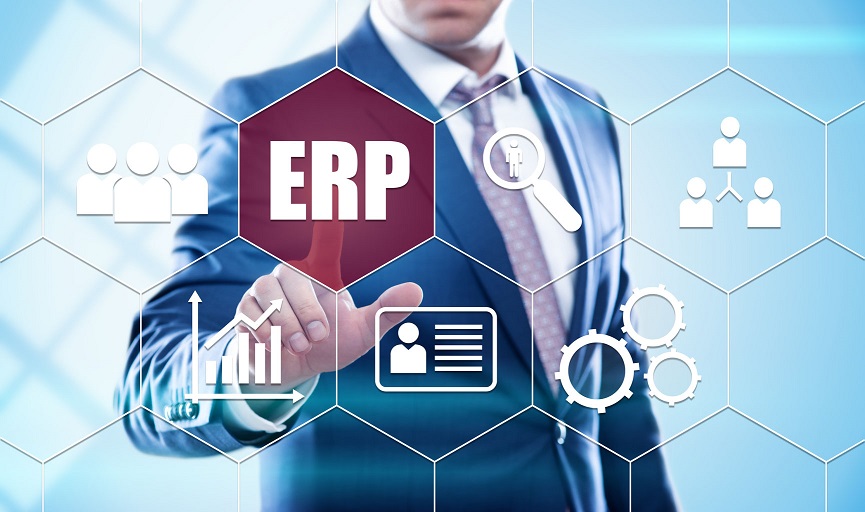An enterprise resource planning (ERP) system is a set of integrated programs that supports core organizational activities such as manufacturing, logistics, finance, accounting, sales, marketing, and human resources. In companies, different departments often use ERP system to share data and knowledge, reduce costs and improve business process management (Ledlum, 2010).
ERP solutions incorporate smart systems adopted by organizations to manage the basic business functions of their business, such as: planning, inventory/material management, purchasing, manufacturing, finance, accounting, human resources, marketing and sales, service, etc. (Hall Ci, 2013).
There are different ERP system providers in the market, and one of the leading ERP system providers is System, Application and Product (SAP) ERP. Since SAP-ERP has multiple modules, one of the most important modules that must be configured is the SAP Financial Accounting (FI) module. This financial accounting module can help employees manage any data involved in financial and business transactions in a unified system. SAP FI is integrated with other SAP modules such as SAP SD, SAP MM, SAP PP, sap partner hong kong to achieve better work results (Wagner & Weidner, 2013).
SAP FI also has several sub-modules, including ledger, accounts payable, assets, special purpose ledger, bank accounting and asset accounting. The general ledger contains a list of transactions that affect each account in the chart of accounts, and the corresponding account balance. Substantial and important integration between Sales and Distribution (SD) and Financial Accounting (FI). Substantial and important integration between material management (MM) and financial accounting (FI). The purchasing and receiving activities in MM will generate FI journal entries.
SAP ERP provides many advantages and benefits, such as flexibility, customized solutions, module integration, continuous support and reduced labor. In view of all the benefits provided by SAP ERP, the researchers decided to put forward a suggestion of using SAP ERP for currency accounting (FI) configuration in Health Restaurant. This research aims to use SAP ECC 6.0 to configure the financial accounting (FI) module of the enterprise resource planning system for Health Restaurant.
Summary
This research aims to develop a financial accounting configuration plan to implement SAP ECC 6.0 and the currency accounting module of the ERP system in healthy restaurants. Relative to the goal, the research answers the following questions:
1. In the following aspects, what configuration requirements should be considered in financial accounting:
a. Organizational structure
b. Process; and
C. Financial accounting data?
2. What are the most problems and challenges related to ERP implementation?
3. Which ICT infrastructure should support the implementation of ERP?
Find
Regarding the research question, the following is the result of the project research:
1. The configuration requirements of the Health Restaurant FI module are as follows:
a. The health restaurant currently has three (3) branches, but only one (1) or centralized financial management institution;
b. Financial management is exhausting centralized planning with a branch with code 100, because the branch has the most branches to conduct all activities and transactions related to financial accounting; and,
C. The currency accounting structure of healthy restaurants includes detailed information such as cash flow, including supplies, materials, salary, and collection;
2. Most of the problems and challenges related to the implementation of ERP for healthy restaurants
The company established in 2009, whose business processes and operations are still in the early and perfect stage, and the supervision of issues/cities related to three branches from different cities Information about data and document transmission.
3. The ICT infrastructure of the health restaurant meets the minimum requirements for implementing SAP ERP and has the ability to meet the recommended requirements.
In conclusion
According to the research results, the following conclusions are drawn:
1. Configure the requirements of the SAP ECC 6.0 FI module along the following areas:
a. Organizational structure
The organizational structure of Health Restaurant posed a huge challenge in configuring SAP ERP because the company was founded in 2009 and is still improving its organizational structure.
b. Process
Health Restaurant’s SAP FI module provides greater transparency and faster accounting procedures, and provides reports for determining purposes; and,
C. financial data
Considering the confidentiality of Health Restaurant’s accounting records, SAP FI Module can still handle assumed information and should still be configured to be flexible and able to adopt changes deemed necessary.
2. Problems and challenges related to ERP implementation include organizational structure and business processes
Because the company has just started operations in 2009 and is also responsible for overseeing three branches from different cities and referring to their transfer. Data and documents. However, since the ERP system is one of the most popular business management systems, it provides multiple organizations with the advantages of real-time functionality and seamless communication. Therefore, the stakeholders supported the research and the conclusion is that despite the existence and implementation ERP relative challenges and problems For the Health Restaurant system, the problems and challenges that have been discovered still need to be considered to the greatest extent in order to successfully configure.
3. The ICT infrastructure supporting ERP implementation covers hardware and software requirements.
Health Restaurant’s current information technology resources (if the hardware and software involved meet the minimum requirements), and through the mixed use of SAP FI modules, Health Restaurant will use the ICT infrastructure recommended by the SAP system.
